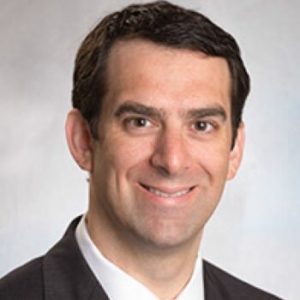
If the initial 2012 euphoria of the free open access medical education (FOAM) movement is wearing off, it is not because its promise has not been fulfilled. Quite the opposite—it is a sign of success. For thousands of emergency medicine providers and learners, FOAM has become an essential and everyday component of the educational landscape. While some debates rage on as to the merits of FOAM versus classic learning tools such as textbooks and peer-reviewed journals (paid access medical education, or PAME), for the most part, one of my own early predictions is coming true: FOAM is becoming more PAME-like and PAME is becoming more FOAM-like.
Explore This Issue
ACEP Now: Vol 33 – No 10 – October 2014For example, FOAM blogs and podcast online show notes are increasingly likely to have heavily footnoted bibliographies referencing top peer-reviewed research and respected texts. No longer solely the purview of the lone-wolf renegade educator, FOAM is increasingly published by authors associated with academic centers, and their work bears the imprimaturs of the prestigious institutions with which they are associated. FOAM as an educational activity has been studied and refined in order to optimize its integration into medical school, residency, and continuing medical education curricula. The results of these studies appear in the top peer-reviewed journals. Many of the same authors of influential research papers, textbook chapters, and clinical policies are creating or supporting FOAM. It is no longer Luddite-chic to be a FOAM detractor. It is clear that those who spurn FOAM, especially top medical educators, do so at the direct detriment of those whom they are responsible for teaching.
Meanwhile, PAME creators are waking up to the realities of the digital/FOAM world. Almost all major journals and academic conferences have Twitter accounts or promoted hashtags that tout links to new articles and lectures, some of which are made available for free. Some journals, including the Annals of Emergency Medicine, have gathered teams of plugged-in physicians to run these accounts. (I along with nine other FOAM-friendly emergency physicians now run the @AnnalsofEM account.) Even the so-called dinosaur EM core textbooks are attempting to keep up with the hurtling pace of FOAM. When ACEP released a new clinical policy stating that serum beta-hCG levels should not be used as discriminatory thresholds for attempting ED ultrasound in first-trimester pregnant patients with bleeding, the online eBook of Tintinalli’s Emergency Medicine was updated; the editors removed its previous algorithm that now runs afoul of ACEP guidelines. Of course, thousands of hard copies with now outdated information remain in circulation, a perennial problem of printed texts. And while FOAMites proudly flaunt their various adventures in “myth busting” (aka, dogmalysis) and their progressive practice styles, careful perusals of the most-used core EM textbooks reveal that there’s not as much new under the sun as we may have thought. Lido/epi in the fingers? Rosen’s Emergency Medicine supports it. Six-hour observation times for biphasic anaphylaxis? Neither Rosen’s or Tintinalli’s suggests it. Liberal use of ketamine for procedural sedation? It’s all in there.
This is not to say that FOAM isn’t still a work in progress, but the progress has been notable. Specifically, the movement as a whole has responded to frequent criticisms that FOAM is too focused on what I call “The Big Three of FOAM”—Critical care, cutting-edge clinical practice, and dogmalysis—at the expense of core content “bread-and-butter” EM. There is now a growing number of online resources that are conspicuous in their focus on core content.
The mission statement of the www.BoringEM.org blog by Brent Thoma, MD (@Brent_Thoma), an emergency medicine resident at the University of Saskatchewan in Saskatoon, and Teresa Chan, MD (@TChanMD), assistant professor in the division of emergency medicine at McMaster University in Hamilton, Ontario, addresses the usual FOAM critiques head on—almost defiantly. The blog states, “If you want to read about finger thoracostomies and ocular ultrasound, you’re in the wrong place. BoringEM addresses the unsexy, common aspects of emergency medicine like palliative care, quality improvement, medical education, and urine. If there is an EM topic you have no desire to learn, we will likely cover it.” The blog backs up those claims up with sleek presentations for learners of all levels on key topics ranging from statistics and comparing cervical spine clearance rules to ECGs. They also offer free flash-card decks for board exam practice.
The FOAM movement is also keenly tuned in to the latest in education research. On Twitter, discussions abound about how to best introduce the “flipped classroom” model. The main insight of the past several years? It turns out that presentation style matters. Sure, readers want well-sourced information, but they also want it in a slick, digestible format. Anna Bargren Pickens, MD (@ABargren), of Maimonides Medical Center, Brooklyn, has a blog, www.EMin5.com, that accomplishes this, living up to its name by teaching important concepts via free online videos in, you guessed it, less than five minutes.
My own FOAMcast (@FOAMpodcast), a podcast I cocreated and cohost with Lauren Westafer, DO, MPH (@LWestafer), an emergency medicine resident at Baystate Medical Center in Northampton, Massachusetts, attempts to bridge the gap between FOAM and PAME. We discuss recent FOAM and link it to EM core content texts that we feel are under-represented in the FOAM world. We aren’t alone. EM Basic by Steve Carroll, DO (@EMbasic), an emergency physician in San Antonio, is an established and popular resource for detailed coverage of core content in podcast format.
While FOAM’s honeymoon period is fading, it is transitioning into a stable, lasting, and central component of modern medical education. It has dependable contributors, but it also benefits from an ever-expanding influx of new energy from recent adopters. FOAM is here to stay, but it hasn’t yet settled or become complacent as a movement. And that is why FOAM continues to be the most exciting development in medical education of our time.
 Dr. Faust is an emergency-medicine resident at Mount Sinai Hospital in New York and Elmhurst Hospital Center in Queens. He tweets about #FOAMed and classical music @jeremyfaust.
Dr. Faust is an emergency-medicine resident at Mount Sinai Hospital in New York and Elmhurst Hospital Center in Queens. He tweets about #FOAMed and classical music @jeremyfaust.
Pages: 1 2 3 | Multi-Page






No Responses to “Free Open Access Medical Education Is Essential, FOAM Experts Say”